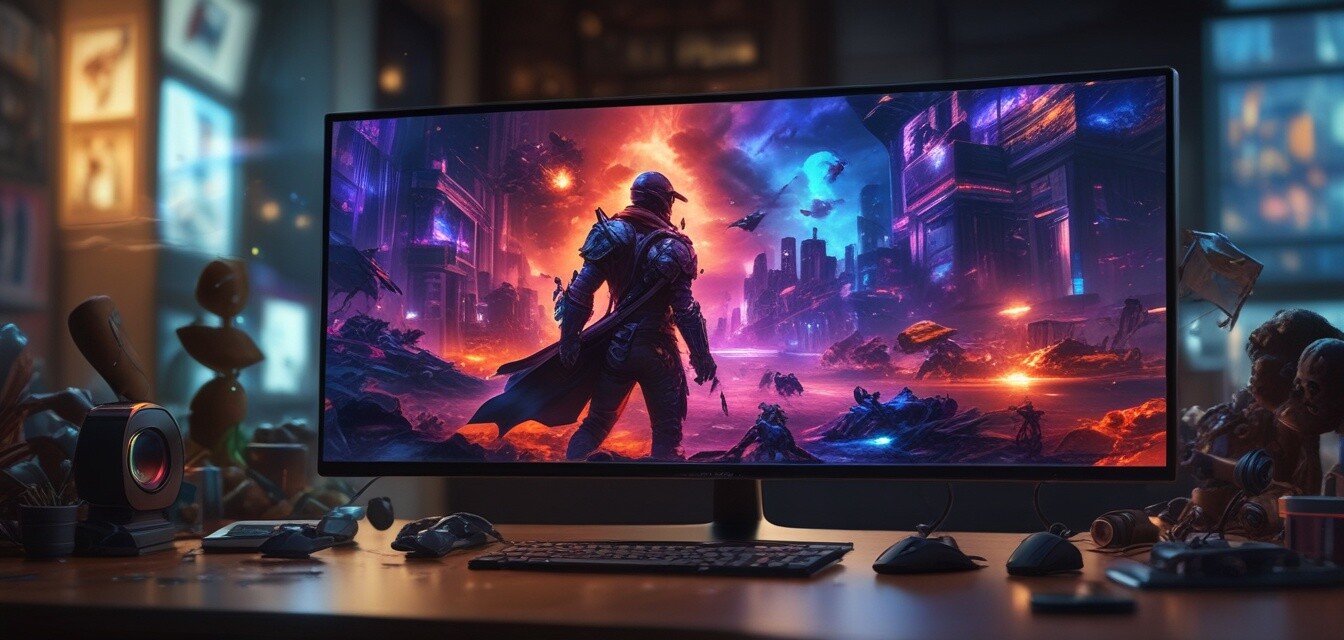
How to choose the right resolution for your OLED monitor
Key Takeaways
- Resolution impacts picture quality and gaming experience.
- Common resolutions include 1080p, 1440p, and 4K.
- The best resolution depends on your gaming needs, visuals, and hardware capabilities.
- Higher resolutions require more powerful hardware for optimal performance.
- Consider your display size and viewing distance when choosing a resolution.
Choosing the correct resolution for your OLED gaming monitor is crucial for an optimal gaming experience. With the vibrant colors and sharp detail that OLED displays offer, the resolution you select can significantly impact your visuals and performance. This guide will walk you through the essentials of selecting the right resolution to best meet your gaming needs and hardware capabilities.
Understanding monitor resolutions
Monitor resolution refers to the number of pixels displayed on the screen, typically represented as width x height. The higher the pixel count, the more detail and clarity you'll experience. Common resolutions for gaming monitors include:
| Resolution | Aspect Ratio | Pixel Count | Common Usage |
|---|---|---|---|
| 1080p (Full HD) | 16:9 | 1920 x 1080 | Casual gaming, general use |
| 1440p (Quad HD) | 16:9 | 2560 x 1440 | Competitive gaming, high-quality visuals |
| 4K (Ultra HD) | 16:9 | 3840 x 2160 | Immersive gaming, graphics-oriented tasks |
Factors to consider when choosing a resolution
1. Gaming needs
Your gaming preferences can guide your resolution choice. If you play fast-paced competitive games, you might prioritize a higher refresh rate over resolution. In contrast, if you enjoy visually immersive experiences, higher resolutions may be necessary.
2. Visual fidelity
One of the most significant advantages of OLED technology is its superior color representation and contrast. Higher resolutions like 4K take full advantage of these qualities, providing stunning, lifelike images.
3. Hardware capabilities
Higher resolutions demand more powerful hardware. Before settling on a resolution, ensure that your graphics card, CPU, and other components can handle it without sacrificing performance.
For a detailed overview of essential hardware components for gaming, check our article on Buying Guides.
4. Display size
The size of your monitor can also dictate the right resolution. On smaller screens, 1080p might suffice, while larger displays may benefit from 1440p or 4K resolutions for sharper images.
Resolution recommendations
1. Full HD (1080p)
1080p is suitable for casual gamers or those on a budget. It offers good performance without the need for high-end hardware. This resolution allows you to enjoy gaming at respectable frame rates.
2. Quad HD (1440p)
If you're serious about gaming and prefer an immersive experience, 1440p is an excellent choice. It provides a great balance between visual fidelity and performance demands. Consider this resolution if your hardware can support it.
3. 4K (Ultra HD)
For those who desire the very best visuals and can afford powerful hardware, 4K is the way to go. This resolution provides stunning detail and realism, great for both gaming and creative endeavors. However, ensure your system can handle the increased demand.
Comparing the resolutions
| Resolution | Pros | Cons |
|---|---|---|
| 1080p | Less demanding on hardware, affordable | Lower detail, may not be as immersive |
| 1440p | Great balance of quality and performance | More demanding, higher cost |
| 4K | Exceptional detail, future-proof | High hardware requirement, expensive |
Conclusion
Choosing the right resolution for your OLED gaming monitor requires consideration of various factors, including gaming needs, visual fidelity, hardware capabilities, and display size. Assessing these elements will help you select the best resolution for an optimal gaming experience. Always keep in mind that a higher resolution will bring stunning visuals, but ensure that your setup can handle the demands.
Tips for beginners
- Start with 1080p if you're new to gaming.
- Upgrade to 1440p if you're looking for better graphics.
- Consider your hardware before opting for 4K.
- Test different resolutions to see what looks best on your screen.
Pros
- Higher resolutions enhance visual detail.
- Better overall gaming experience with rich colors.
- More immersive environments in games.
Cons
- More demanding on hardware resources.
- Potentially higher costs for monitors and graphics cards.
- Higher resolutions may result in lower frame rates if not properly supported.